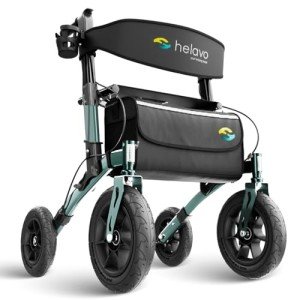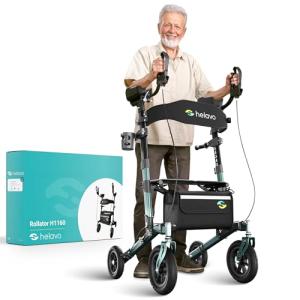
Premium Quality Walker
Add a review FollowOverview
-
Founded Date juillet 16, 1931
-
Sectors Communication
-
Posted Jobs 0
-
Viewed 3
Company Description
What’s The Current Job Market For Elderly Walker Professionals?

The Importance of Elderly Walkers: Enhancing Mobility and Independence
As people age, their bodies go through different modifications that might affect their mobility. Conditions such as arthritis, osteoporosis, and other persistent disorders can make browsing the environment challenging for the Elderly Walker. Fortunately, assistive gadgets like walkers can significantly improve mobility, ensuring that seniors maintain their independence and lifestyle. This blog post will explore the various types of walkers readily available, their advantages, and crucial considerations when choosing the best one.

Understanding the Different Types of Walkers
A Top-Rated Walker can provide the essential support for seniors dealing with mobility. Nevertheless, not all walkers are produced equal. Here’s a thorough breakdown of the various types of walkers offered.
| Type of Walker | Description | Best For |
|---|---|---|
| Standard Walker | A lightweight frame with four legs supplying fundamental support. | Individuals needing assistance while walking. |
| Two-Wheeled Walker | A walker with 2 wheels at the front enabling for easier movement. | Users who need more mobile support for faster walking. |
| Four-Wheeled Walker | A rollator with four wheels, brakes, and a seat. | Active seniors who need more mobility and a location to rest. |
| Knee Walker | A specialized walker with a padded platform for resting the knee. | Individuals recovering from foot or ankle injuries. |
| Folding Walker | A walker that can be collapsed for easy storage and transportation. | Seniors requiring convenience when traveling. |
Table 1: Types of Walkers
Benefits of Using a Walker
Walkers provide a wide variety of benefits for seniors, including:
- Enhanced Stability: Walkers give extra support to the user, helping to promote self-confidence while walking.
- Enhanced Balance: With a walker, seniors can rearrange their weight, enhancing balance and reducing the threat of falls.
- Increased Independence: Users can move around their homes and neighborhoods more conveniently, allowing them to take part in social activities.
- Decreased Pain: Walkers can reduce the influence on joints and muscles, making movement less unpleasant for conditions like arthritis.
- Flexible Usage: Walkers are ideal for various environments, whether inside, outdoors, or on uneven surface areas.
Table 2: Benefits of Using a Walker
Choosing the Right Walker
Choosing the best walker is vital to making the most of mobility and ensuring comfort. Here are some factors to consider:
- Weight Capacity: Ensure that the walker can support the user’s weight. The majority of walkers have actually a specified weight limitation.
- Height Adjustment: Adjustable height features make sure that the walker is set to the proper level for the user’s height, promoting great posture and convenience.
- Wheels vs. No Wheels: Depending on the user’s abilities and environment, a walker with wheels may be more helpful for movement, while a non-wheeled walker may offer more stability.
- Extra Features: Some walkers feature built-in seats, storage, or accessories (like cup holders) that can boost user experience.
Table 3: Considerations for Choosing a Walker
Maintenance of Walkers
Correct maintenance of walkers is crucial for ensuring safety and longevity. Here are some fundamental maintenance tips:
- Regular Inspections: Check for cracks, rust, or loose screws and ensure that the rubber ideas on the legs are undamaged.
- Wheel Maintenance: Ensure that wheels move freely and are not stuck; oil them if needed.
- Adjustments: Periodically inspect if the height and settings stay proper, changing them as essential to preserve user convenience.
Table 4: Maintenance Tips for Walkers
FAQs About Elderly Walkers
1. What is the average expense of an elderly walker?
The prices of walkers can range substantially based upon the type and features. Standard walkers might cost in between ₤ 50-₤ 100, while specialty walkers or rollators can vary from ₤ 100 to ₤ 300.
2. Are walkers covered by insurance?
Lots of insurance plans, consisting of Medicare, cover the cost of walkers, offered they are deemed medically essential. It’s crucial to examine with your insurance company for specifics.
3. How do I understand when my liked one requires a walker?
Signs may consist of trouble walking individually, regular falls or near-falls, and increased tiredness while carrying out day-to-day activities. A healthcare specialist can provide a thorough assessment.
4. Can walkers be used outside?
Yes, numerous walkers can be used both indoors and outdoors. If planning to utilize a Shopping Walker outdoors, consider a model with wheels or wider legs for stability on various surfaces.
5. The length of time can a walker last?
With proper maintenance, a great quality walker can last for several years, though wear and tear will differ depending on usage frequency and conditions.
Walkers are indispensable tools that can bring back mobility and independence for seniors while ensuring their safety. As people live longer and lead active lifestyles, purchasing correct assistive gadgets like walkers is more important than ever. Comprehending the types of walkers offered, their benefits, and how to choose the Best Rollator Walker one can empower users and their caregivers to make educated choices. Ultimately, the ideal walker can cause better quality of life, enabling aging individuals to remain active individuals in their communities.
